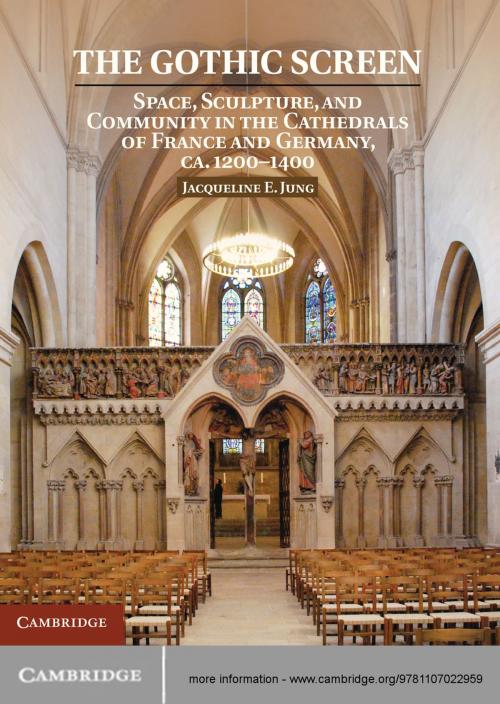The Gothic Screen
Space, Sculpture, and Community in the Cathedrals of France and Germany, ca.1200–1400
Nonfiction, History, European General, Religion & Spirituality| Author: | Jacqueline E. Jung | ISBN: | 9781139794107 |
| Publisher: | Cambridge University Press | Publication: | December 28, 2012 |
| Imprint: | Cambridge University Press | Language: | English |
| Author: | Jacqueline E. Jung |
| ISBN: | 9781139794107 |
| Publisher: | Cambridge University Press |
| Publication: | December 28, 2012 |
| Imprint: | Cambridge University Press |
| Language: | English |
At the heart of Gothic cathedrals, the threshold between nave and sanctuary was marked by the choir screen, a partitioning structure of special complexity, grandeur, and beauty. At once a canopy for altars, a stage for performance, a pedestal for crucifixes and reliquaries, and a ground for spectacular arrays of narrative and iconic sculptures, the choir screen profoundly shaped the spaces of liturgy and social interaction for the diverse communities, both clerical and lay, who shared the church interior. For the first time, this book draws together the most important examples - some fully extant, others known through fragments and graphic sources - from thirteenth- and fourteenth-century France and Germany. Through analyses of both their architectural and sculptural components, Jacqueline E. Jung reveals how these furnishings, far from being barricades or hindrances, were vital vehicles of communication and shapers of a community centered on Christian rituals and stories.
At the heart of Gothic cathedrals, the threshold between nave and sanctuary was marked by the choir screen, a partitioning structure of special complexity, grandeur, and beauty. At once a canopy for altars, a stage for performance, a pedestal for crucifixes and reliquaries, and a ground for spectacular arrays of narrative and iconic sculptures, the choir screen profoundly shaped the spaces of liturgy and social interaction for the diverse communities, both clerical and lay, who shared the church interior. For the first time, this book draws together the most important examples - some fully extant, others known through fragments and graphic sources - from thirteenth- and fourteenth-century France and Germany. Through analyses of both their architectural and sculptural components, Jacqueline E. Jung reveals how these furnishings, far from being barricades or hindrances, were vital vehicles of communication and shapers of a community centered on Christian rituals and stories.















